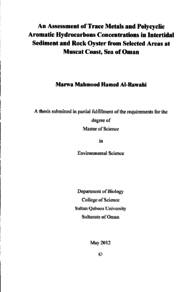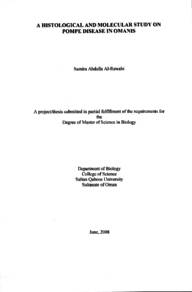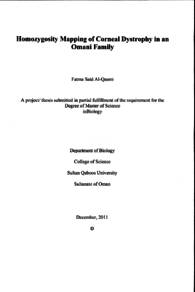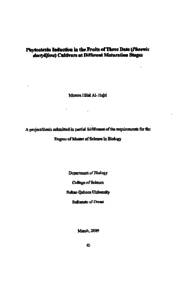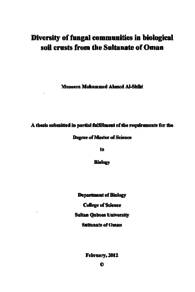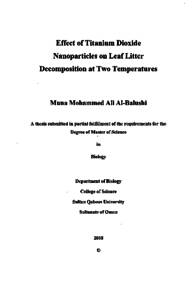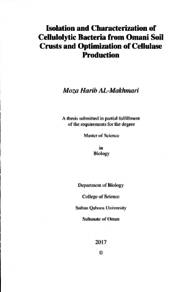وثيقة
An assessment of trace metals and polycyclic aromatic hydrocarbons concentrations in intertidal sediment and rock oyster from selected areas at Muscat Coast, Sea of Oman.
الناشر
Sultan Qaboos University
ميلادي
2012
اللغة
الأنجليزية
الملخص الإنجليزي
Trace metals and polycyclic aromatic hydrocarbons (PAH) compounds are among contaminates that are wildly distributed and their occurrence in the marine environments have attracted attention of the scientific community because of their persistence, potential toxicity, and ability to bioaccumulate and bioamplify in marine food webs, thus posing sever health risk to human. Sediments are regarded as the ultimate sink for contaminants in the aquatic environments and marine bivalves, such as oysters have the capability to accumulate and concentrate trace substances to high levels and they are widely used as biomonitors in contaminants biomonitoring programmes and studies.
The main scope of this study was to investigate the extent of trace metals (Cd, Cr, Cu, Zn, Pb, Ni, V and Hg) and 16 US-EPA priority PAHs contamination in surface intertidal sediments and soft tissues of rock oyster Saccoctea culullata (Mollusca: Bivalvia: Ostreidae) that were collected from selected sampling stations at Muscat coast along the Sea of Oman. Trace metals and PAHs were measured using inductively coupled plasma (ICP-OES) and gas chromatography (GC-MS), respectively. Hazards due to sediments and oysters contamination were assessed using sediment quality guidelines (SQGs) and FAO/WHO Maximum Permissible Levels (MPL) proposed for seafood, respectively.
Results showed that the distribution of trace metals and PAHs varied considerably among the sampling stations. Variations may be attributed to nature and human activities. Higher incentrations of most of the studied metals in sediments were reported at Seeb-Harbour, G-NDC, G-PDP. Q-New road, and Q-Wadi Aday and with regard of sedimentary PAHs, the highest concentrations were recorded in the vicinity of O-Mina Fahal. Lowest levels of nearly all measured contaminants were observed at Sifah sampling station which is relatively far for suspected anthropogenie pollution sources that are associated with cites Metal concentrations (in mgkg dry weight) in sediments ranged Cd: 0.54 to 3.69, Cr: 721 to 512.76. Cu: 2.09 to 30.11. Ni: 6.76 to 836,52 Pb: 1.75 to 14,80. V: 7.89 to 116.28: Zn: 7.68 to 58.43, Hg: 0.008 to 0.080, whereas in oyster tissues varied from Cd : 2.40 to 7.53. Cr: 1.09 to 4_52, Cur: 59.01 to 1308.72. Ni: 1.26 to 9.87. Ph: 0.52 to 1.00, V: 0.17 to 1.20, Zn: 382.36 to 1578.50. He: 0.01 to 0.28. Results indicated that the distribution of trace metals in sediments and Schlat tissues varied and followed the order of Ni>Cr>V>2n CuPbCd> Hand Z C d Ni> V> Pb Hg, respectively. Ni and Cr levels in sediments were very high in some sampling stations in comparison with standards. Mineralization of these elements from Cr and Ni-rich ophiolites rocks may be partially responsible for the elevated levels of Ni and Cr in sediments of some sampling stations. Cu and Zo were greatly enriched in oyster tissue. Highest Cuand Zn levels were reported in oyster tissues collected from G-NDC and Q-Mina Fahal, respectively. Statistically, no simple relationships were observed between the concentrations of all studied trace metal apart from Hg, in sediments and oyster tissue.
المجموعة
URL المصدر
قالب العنصر
الرسائل والأطروحات الجامعية

